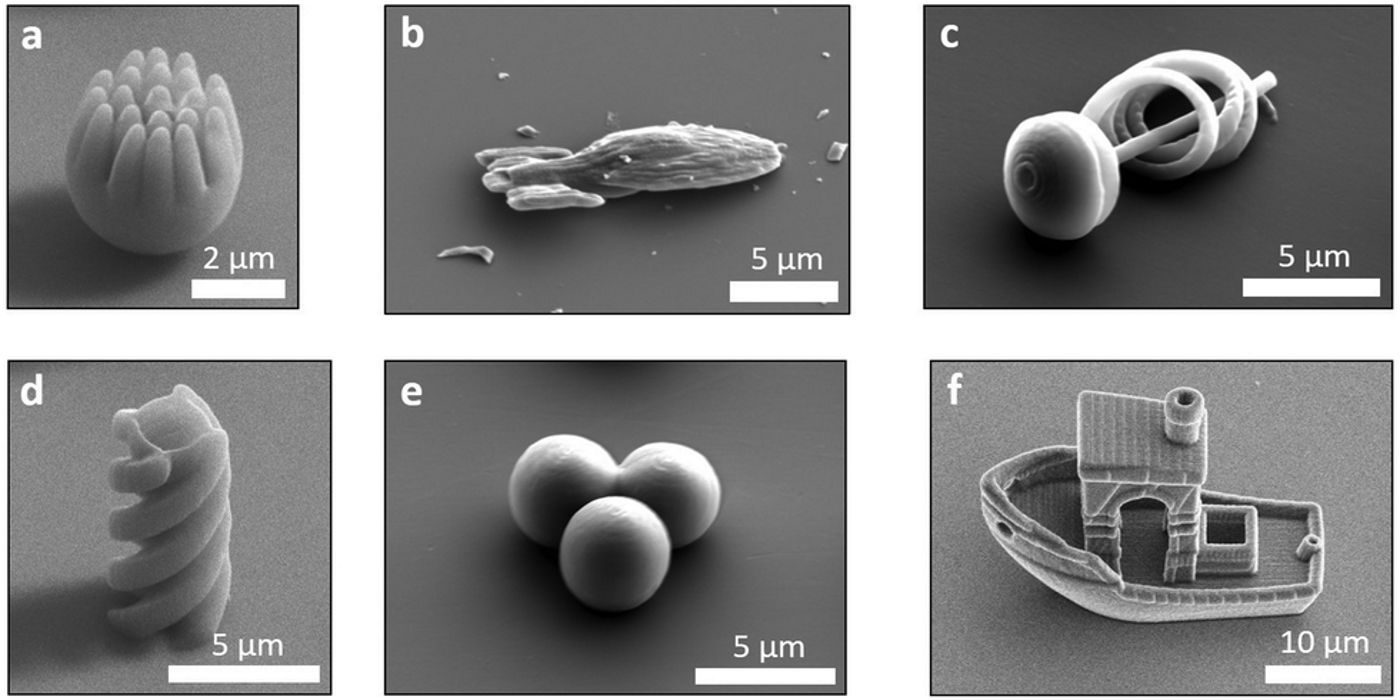In another collision between experimental science and science fiction, a team of physicists from Leiden University in the Netherlands got international attention from nerd media this week for making a very tiny replica of the USS Voyager, from the Star Trek series of the same name. The miniature Voyager (see above image, top middle) is one of six synthetic "microswimmers" that the team produced with a micro-scale 3D printer.
The microswimmers are five micrometers long (0.005 mm, or 0.000195 inches), which is a little smaller than the average red blood cell, and are coated in platinum. This allows them to propel themselves through liquid, due to the effects of a chemical reaction between the platinum and the hydrogen peroxide solution that the physicists suspend them in. Right now, the point of this research is to study how a synthetic microswimmer moves, in order to better understand the motion and propulsion of natural biological microswimmers such as bacteria, spermatozoa, or white blood cells.
The mini-Voyager is one of several exotically-shaped objects that the team produced with its 3D printer, alongside a 30-micrometer version of "Benchy" the tugboat. Benchy is a famous free-to-use design that's described by its makers Creative Labs as the "jolly 3D printing torture test." As the name suggests, the design is meant as a benchmark, as it deliberately includes many features like curved surfaces that have traditionally been difficult for 3D printers to reproduce. If the new printer can't make Benchy, it's got some flaws.
The purpose behind making such strangely-shaped microswimmers, which don't really mimic any kind of organic structure, is explained by the Leiden University team in a report published in the journal Soft Matter. Previously, synthetic microswimmers have been largely limited to spherical shapes, since they were primarily made through chemical or evaporation techniques, but microscale 3D printing allows researchers to produce more complex, custom-made objects. The Voyager microswimmer is just one example thereof.
Through 3D printing, as per the original report, the researchers can shape tiny particles on each microswimmer to affect how they move through liquid. This lets them study shape-dependent behavior and motion by custom-designing strange microswimmers, and some Star Trek aficionado on the team took advantage of this to let their fan flag fly.
For now, this is primarily a natural-sciences experiment, to help scientists understand how motion and propulsion even work at a microscopic scale. That, in turn, will enable designers to be able to custom-design microswimmers to move in specific ways. The original Leiden paper specifically mentions using man-made synthetic particles with application in medical diagnostics and targeted drug delivery. Imagine a painkiller that actually does go straight to the afflicted area upon ingestion, and the value of this sort of research becomes obvious.
On a larger scale, the next new Star Trek project to air is "Die Trying," the fifth episode of season three of Star Trek: Discovery, on CBS All Access on November 12th.
Source: Soft Matter

